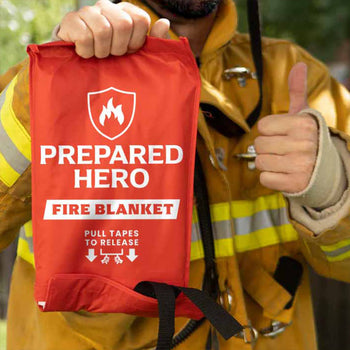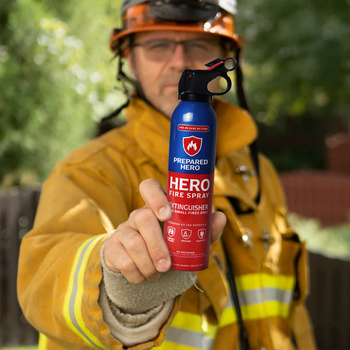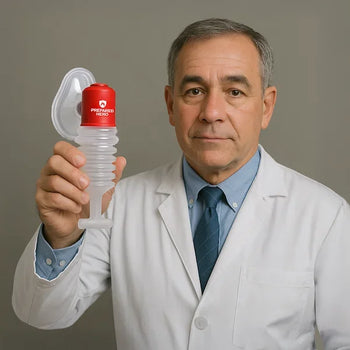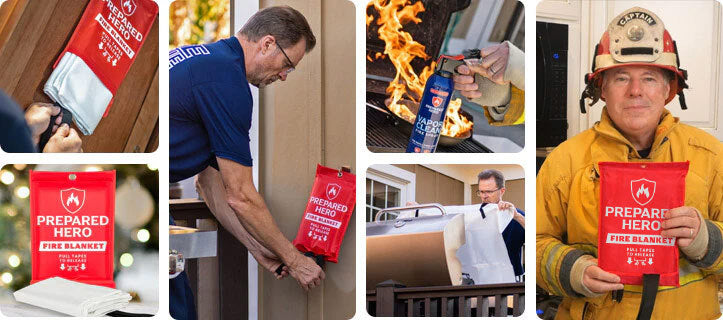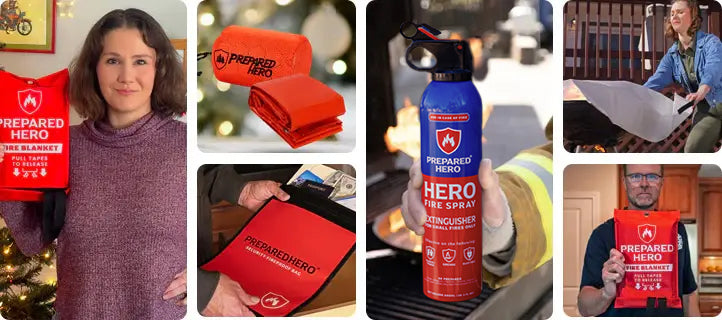Where you put your smoke detectors matters just as much as installing them. Proper placement makes sure they can detect...
Did you know? More than 66% of home cooking fires are caused by cooking items, including cooking oil, fat, and grease. Out of these cooking fires, 51% were first ignited by cooking oil, fat, and grease.
Class K fires, also known as Class F or grease fires, are dangerous because they can quickly turn a fun cooking session into a raging inferno. While cooking has risks, you can take a few steps to make sure it doesn’t harm you and your loved ones.
So, how do Class K fires start? Where do they usually happen? How can you put them out? In this guide, we’ll explain everything you need to know about Class K fires.
What Are Class K Fires?

A Class K fire is a type of fire fueled by cooking oil, fat, or grease. It usually occurs in residential and commercial kitchens, where oil is stored and heated. They’re especially dangerous because they can flare up quickly and are tricky to control. Plus, you can’t use water to put out grease fires.
Vegetable oil, the most common type of cooking oil, can ignite at high temperatures, with flashpoints ranging from 410°F (210°C) to 633°F (334°C). Once ignited, these oils can produce intense heat and spread quickly. It can become worse if there are other fire hazards in your kitchen.
The effects of Class K fires can be devastating. For one, inhaling smoke from a grease fire can result in respiratory issues or make pre-existing conditions worse. Oil is also extremely hot, so it can cause severe burns. In the worst cases, Class K fires can cause permanent injuries or death.
In addition, Class K fires can cause financial problems. Think about the medical bills, repair costs, employee downtime, and rebuilding expenses. While fire insurance can cover some of the costs, you still have to pay out of pocket for expenses not included in your policy.
Lastly, Class K fires can lead to emotional trauma. Losing a loved one, employee, house, or business due to a fire has long-term effects on someone’s mental health. It can cause anxiety, depression, and post-traumatic stress disorder, among others.
Common Causes of Class K Fires

Class K fires can happen quickly, and knowing what causes them is key to putting them out. Here are the common causes of Class K fires:
Unattended Cooking
Unattended cooking is the top cause of cooking fires, according to the National Fire Protection Association (NFPA). Distractions like watching TV or drinking alcohol divide your attention when cooking. Always focus on what you’re cooking, especially when you're using oil. For instance, oil can ignite and set a blaze if you take a phone call while cooking.
Deep Frying
Deep frying is another common cause of Class K fires. A Class K fire can start if the oil is too hot or you throw food into the fryer. Frying frozen food without thawing can also create steam that ignites the oil or pushes it out of the fryer. As a result, the oil can ignite and spread to other areas. For example, frying frozen chicken wings directly from the freezer can cause steam and start a Class K fire.
Grease Buildup
Grease can accumulate on stovetops, ovens, or vents. Once the buildup comes into contact with heat or open flame, it can quickly ignite. For example, not cleaning your oven regularly can cause grease buildup. The next time you turn it on, the heat can ignite the grease and burn everything inside.
Flammable Materials Nearby
Cooking with oils near flammable materials like paper towels, cleaning rags, or wooden utensils can lead to Class K fires. Place flammable items at a safe distance from your cooking area. For example, don’t leave a paper towel roll too close to a hot frying pan.
Improper Extinguishing Methods
Using water to put out a grease fire is a big mistake. Water will cause the burning oil to splatter or explode. Use a fire blanket, fire spray, or fire extinguisher to put out the grease fire instead.
Using the Wrong Pot or Pan
Not every cooking pot or pan is made for high-temperature frying. Using pots or pans that can’t handle extreme heat can lead to overheating. For instance, using a thin alloy pan meant for low heat can burn the oil if used for deep frying.
Where Do Class K Fires Occur?

Class K fires occur in different settings, but they more commonly happen in places where cooking oil, fat, and grease are used. Here are the places where Class K fires usually occur:
Home Kitchens
Being at home doesn’t mean you’re safe from Class K fires. In fact, many home fires start in the kitchen, especially when using oil. Whether you’re making a quick French toast or preparing a complete spread for Thanksgiving, your home kitchen is prone to Class K fires. Even easy cooking tasks, like frying an egg, can start a grease fire if you step away. So, watch what you’re cooking and have a fire blanket, fire spray, or fire extinguisher nearby.
Restaurants
Restaurants are one the most common places for Class K fires. With deep fryers, grills, and sauté stations working overtime, the fire hazards and risks associated with fire increase. Busy kitchens also have many pots of hot oil going at once, making commercial kitchens prone to grease fires.
Think about the hustle and bustle during a dinner rush. A small spill from a deep fryer or an unattended pot can lead to a grease fire in seconds. For instance, a busy diner known for its fried food might burn down if a staff member forgets about a fryer full of oil.
Food Trucks
Food trucks may be smaller than restaurants, but they’re still hotspots for grease fires. Many food trucks fry food, and with the limited space available, managing a Class K fire can be tricky. For instance, grease splatter or oil spills can occur in a truck that deep-fried churros, especially during busy periods. If a Class K fire breaks out, people in and out of the truck will be in danger.
Outdoors
Grilling and roasting outdoors can result in Class K fires, especially if you’re using oil-based marinades or sauces. Grease can drip onto hot surfaces, charcoal, or wood and ignite a fire that can spread quickly.
For instance, someone grills meat and uses an oil-based sauce to glaze the meat. If the meat falls to the grill, it can ignite and start a fire. The same thing can happen if someone roasting meat outdoors uses too much oil near flammable items like kerosene and paper towels.
How to Put Out Class K Fires

A quick response can stop Class K fires from spreading and threatening lives and properties. Knowing how to put them out is a must, especially if you cook or work with oil. Check out how to put out Class K fires below:
Stay Calm
First of all, stay calm. Panicking won’t help and will lead to poor decisions. Take a deep breath and focus on the problem at hand. Is the fire small enough to extinguish by yourself? Do you feel confident enough to put it out? If you have the right tools and can safely put it out, follow the next steps in this guide. Otherwise, evacuate and call the fire department.
Turn Off the Heat Source
Turn off the heat source if it’s safe to do so. Doing this prevents the Class K fire from getting worse. If you can’t turn off the heat source safely, let it be. Remember, your safety is the priority here.
Use the Right Tools
It’s best to use a fire blanket if the Class K fire is contained in a pot or pan. Simply unfold the fire blanket and carefully cover the fire with it. Doing this cuts off the oxygen supply and extinguishes the fire.
If you don’t have a fire blanket, use a fire spray. It’s a lightweight, non-toxic, portable version of a fire extinguisher. Just aim the nozzle at the base of the fire and spray it from side to side until the flames die.
Use a Class K fire extinguisher if you don’t have a fire blanket and fire spray. This type of fire extinguisher contains wet chemical agents that can smother a grease fire. Use the PASS fire extinguisher technique (Pull, Aim, Squeeze, Sweep) to put out the fire. Just be careful when using this extinguisher because it has chemicals that can harm people.
Don’t Use Water
Using water is one of the biggest mistakes people make when dealing with grease fires. Never pour water on a Class K fire. Water can make burning oil splatter and spread the flames. In the worst cases, water can cause it to explode and permanently injure you.
Evacuate If Needed
If you can’t put out the Class K fire or it gets out of control quickly, evacuate immediately. Follow the RACE (Rescue, Alert, Confine, Evacuate) acronym if possible. Once everyone’s safe, call the fire department. Don’t go back until the authorities arrive and declare it safe. Grease fires can reignite and spread again, so don’t take that risk.
Have a Plan for Future Fires
Take time to make a fire prevention plan after everything’s under control. Make sure you have the right tools, like fire blankets, fire sprays, and fire extinguishers. Install fire prevention equipment like smoke alarms and fire sprinklers as well.
Conclusion
Understanding Class K fires and knowing how to put them out helps reduce fire risks. Having the right fire safety tools, including fire blankets and fire sprays, is also crucial. Whether you're making a quick snack at home or working in a busy commercial kitchen, knowing what to do in a fire emergency makes a huge difference.
Do you want reliable, easy-to-use, and non-toxic tools that can help you put out Class K fires quickly? Check out Prepared Hero’s fire safety tools here, and get up to 51% off on certain items. Stay safe, hero!


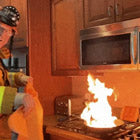 Fire
Fire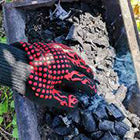 Safety
Safety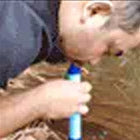 Survival
Survival Protection
Protection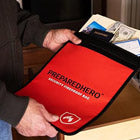 New
New
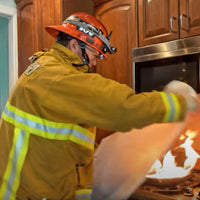 Fire
Fire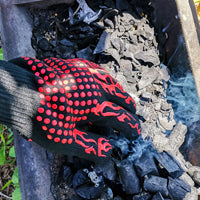 Safety
Safety Survival
Survival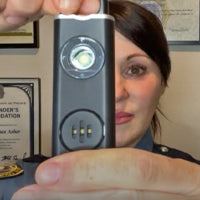 Protection
Protection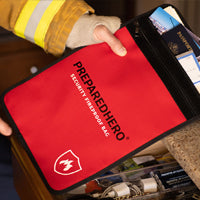 New
New
